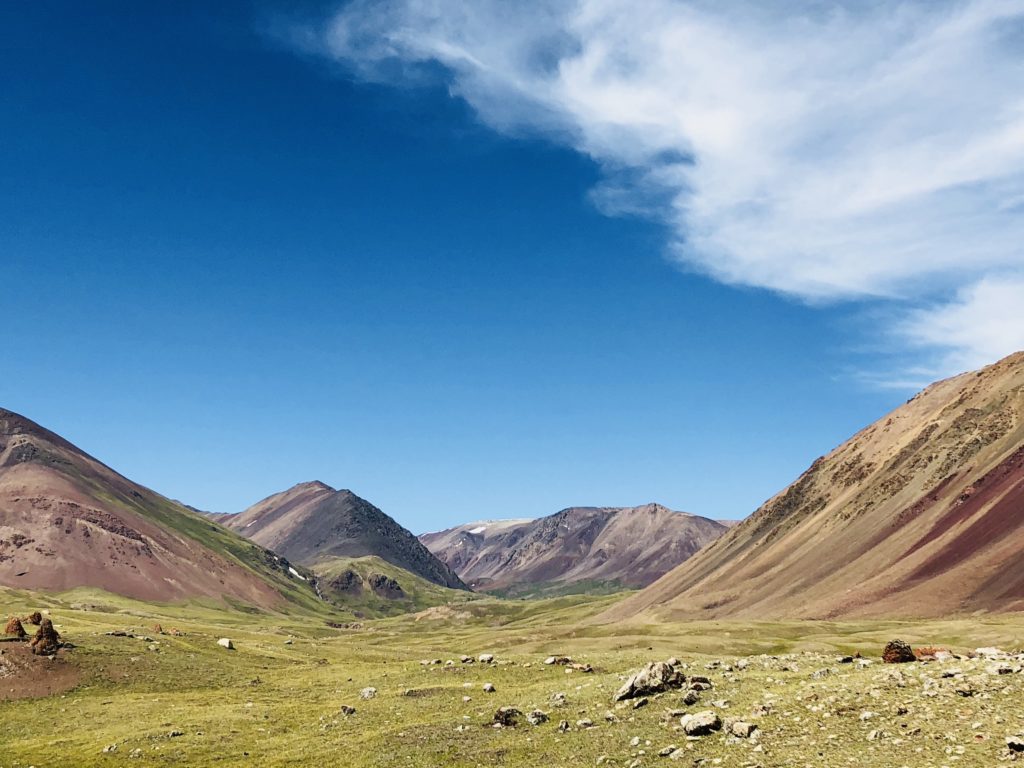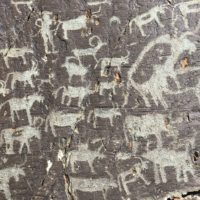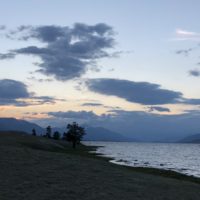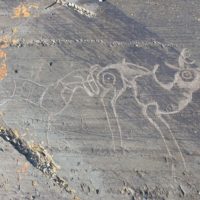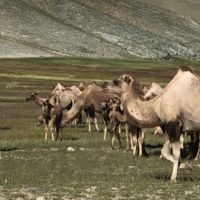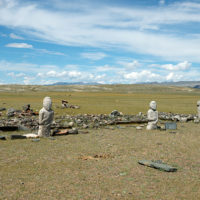Preserving Altai Cultural & Natural Heritage [2020]
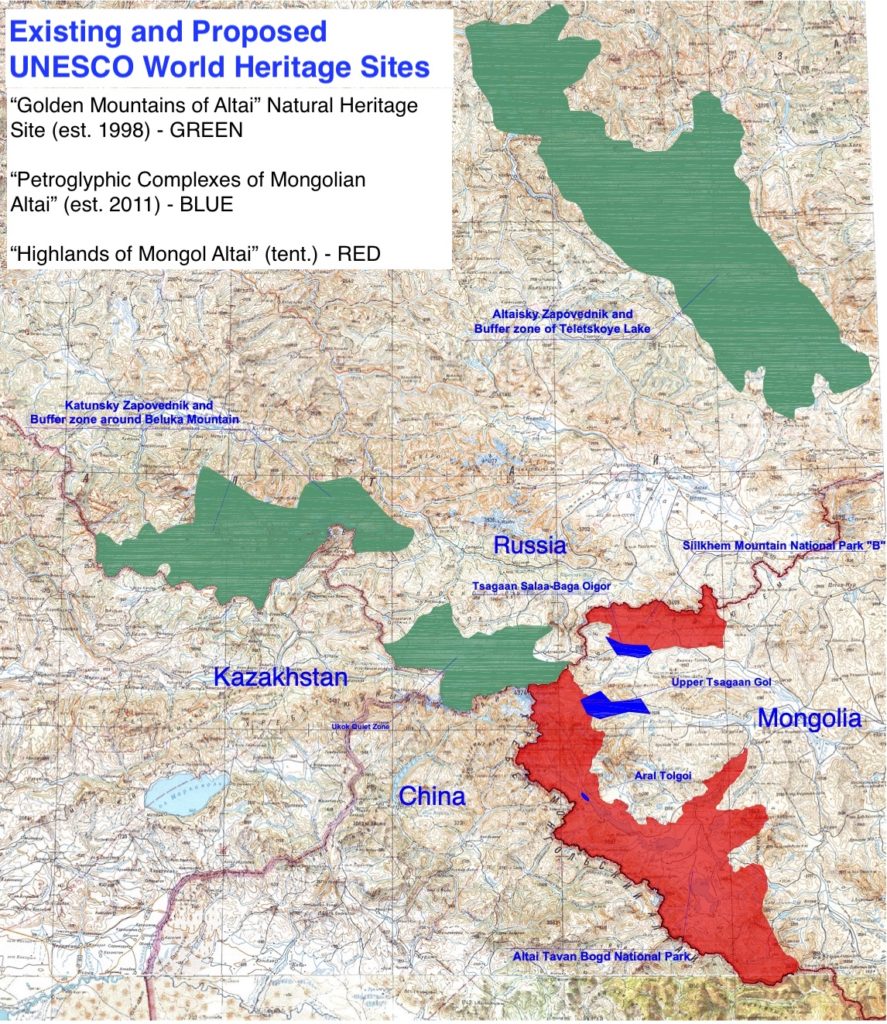
Beginning in 2018, we supported a long-term project to establish the “Highlands of Mongolian Altai” as a combined natural and cultural World Heritage Site. Inscription on UNESCO’s World Heritage List would offer additional resources for protecting unique flora and fauna in the area, as well as millennia of human culture and traditions. The nomination also aims to achieve WHS designation as a “mixed” property, recognizing outstanding value in terms of both biodiversity and cultural value.
New! Watch this VIDEO overview of the proposed World Heritage Site.
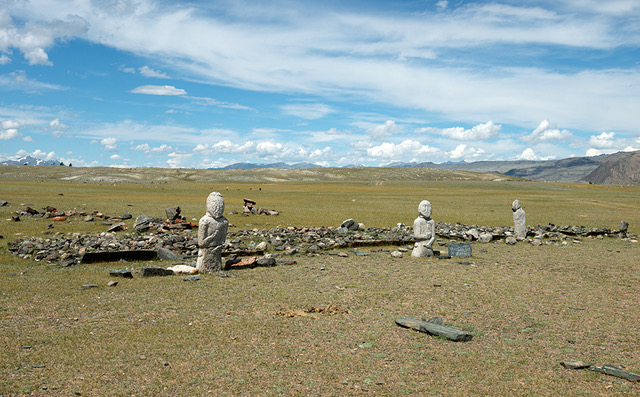
Our lead partner is Foundation for the Protection of Natural and Cultural Heritage, an UNESCO-accredited organization in Mongolia. They lead the effort, working in partnership with government agencies, community organizations, and local communities.
Importance of Altai heritage
This proposed site, centered on the sacred “5 Peaks” area of Tavan Bogd National Park, is critical to conserving the entire region’s biodiversity and cultural landscape. In biodiversity terms, there are three main aspects. First, WHS status would support added protections for habitat areas and migration corridors of rare and endangered species, such as the snow leopard, Pallas (manul) cat, raptors, and argali sheep. Second, the area is habitat for a rich variety of rare and endemic plant species. Third, the nominated property is a representative and well-preserved part of a unique, larger natural ecosystem—the Altai Mountains.
Turning to cultural heritage, the area is dotted with Iron and Bronze age sites and artifacts representing a rich overlay of the practices, culture, and traditions of diverse nomadic cultures. Scythian and Turkic burial complexes, monumental structures of khirigsuur, and standing stone memorials, including Deer stones, are among the area’s treasures. The High Altai of Mongolia is also an exceptional testimony to a still living civilization of nomadic herders.
Nominating a site for inscription on the World Heritage List is a complicated, multi-year undertaking. The Mongolian team began the process in 2014. With our support and as of October 2020, the team has completed the nomination requirements. Extensive fieldwork allowed the team to document key cultural and natural heritage sites, identify proposed boundaries, and seek extensive and repeated input from local communities about the importance of protecting and preserving the property. The team also met with Bayan-Ülgii Province authorities and have their full support.
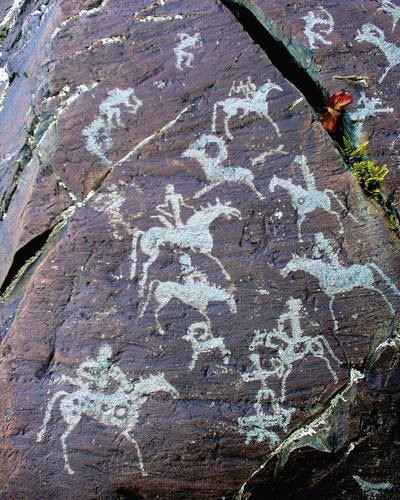
What’s Next? – UPDATED December 2020
The team will fine-tune the Altai heritage nomination with the World Heritage Center, Mongolian government, and advisory bodies International Council on Monuments and Sites (ICOMOS) and International Union for Conservation of Nature and Natural Resources (IUCN) in 2021-2022, and THEN in mid-2023, the World Heritage Committee will make a final decision.
We will keep you posted! You can also track the nomination process at the World Heritage Center site.


